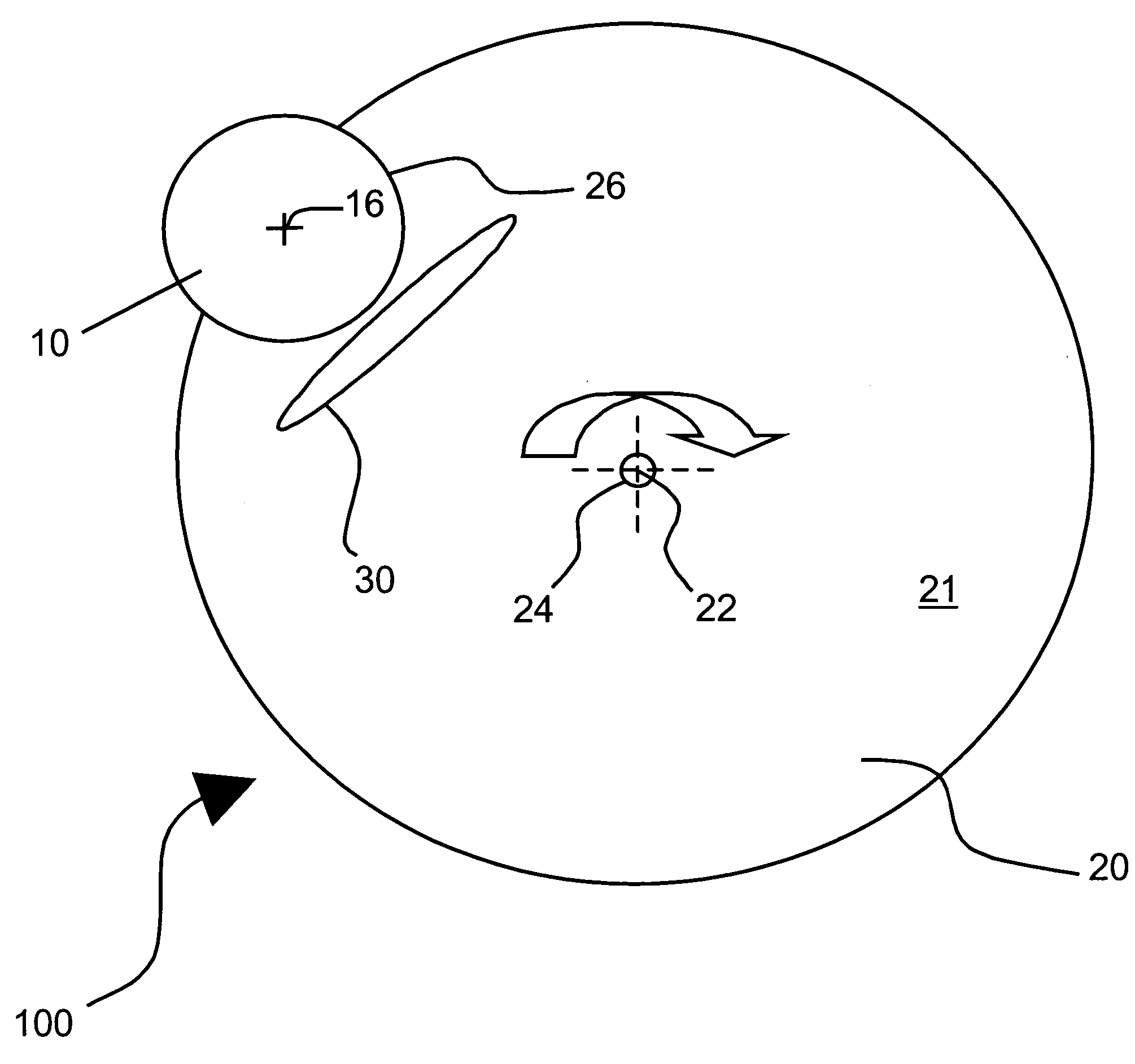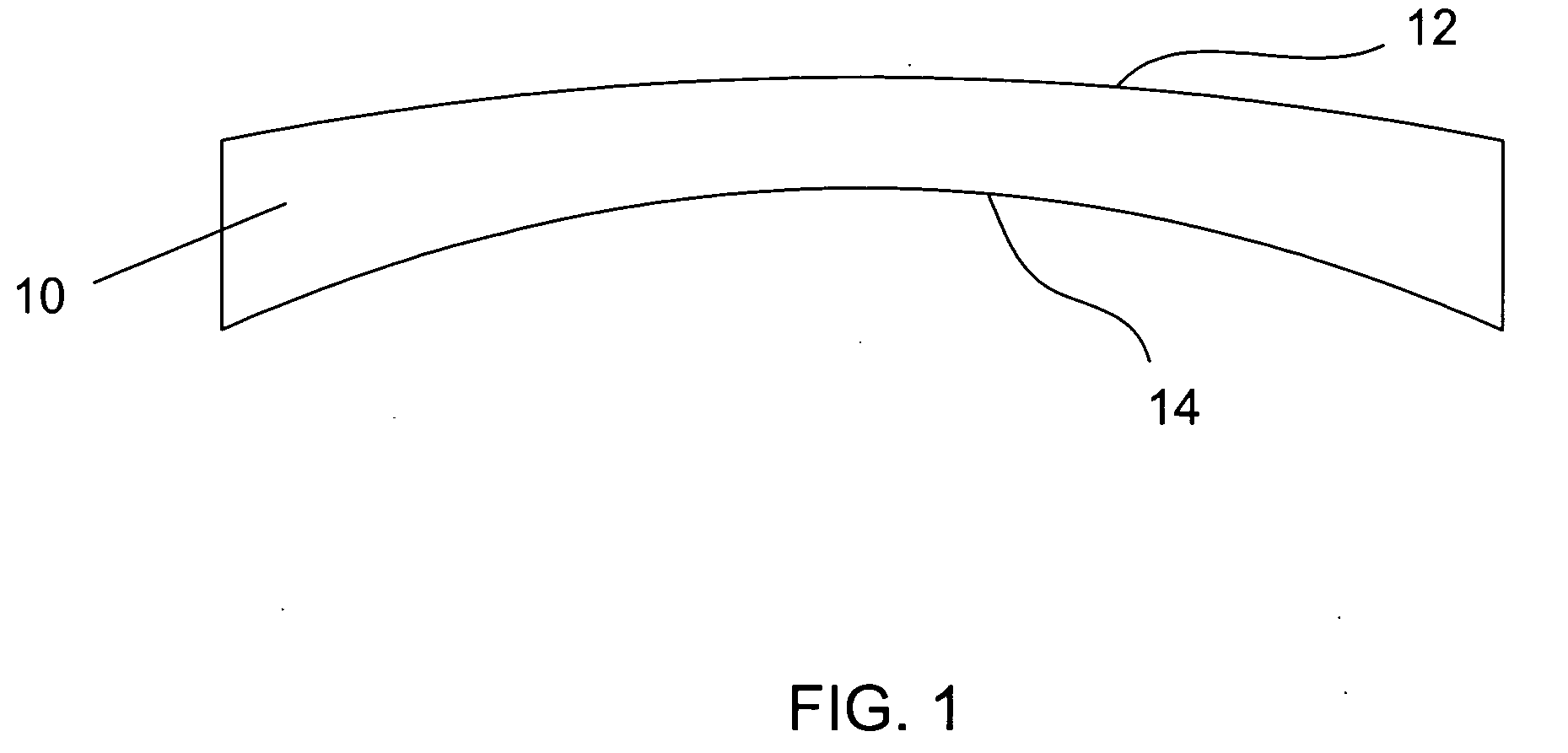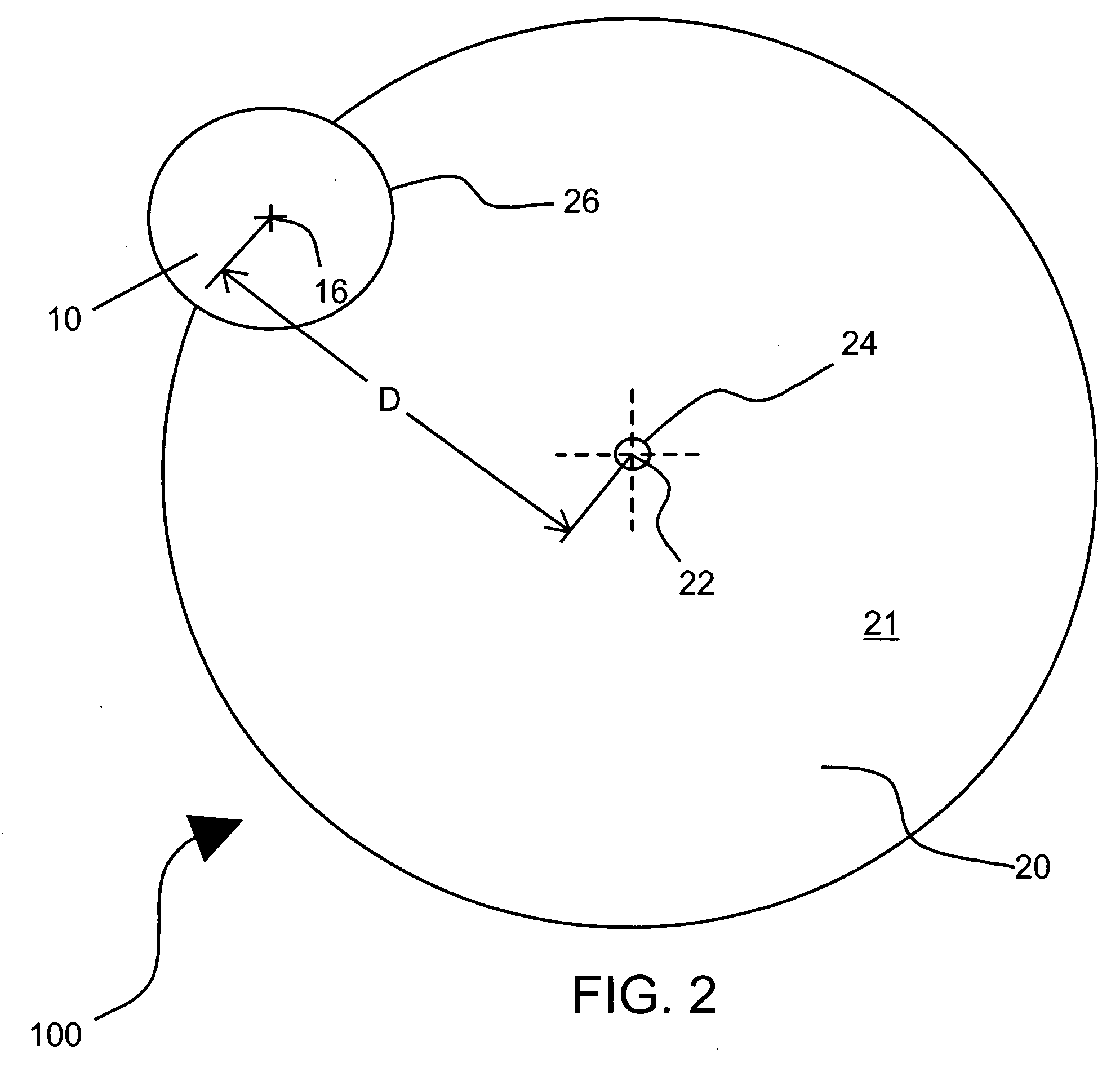Methods for coating lenses
a technology of coating lenses and lenses, applied in the field of coating lenses, can solve the problems of increased costs, not easily altered, film-based products suffer from certain performance/technology shortcomings, etc., and achieve the effect of short tim
- Summary
- Abstract
- Description
- Claims
- Application Information
AI Technical Summary
Benefits of technology
Problems solved by technology
Method used
Image
Examples
example 1
[0073] A substantially circular plastic plate with a diameter of 220 mm was prepared with a notch having a 30 mm in radius located in the edge of the plate. The plate and notch were prepared consistently with setup 100 shown in FIG. 2. A finished single vision 6 base ORMA plano lens (available from Essilor International, and containing diethylene glycol bis (allyl carbonate)) having a convex surface and a substantially opposite concave surface was corona treated using a Model BD-20 handheld unit (Electro Technic Products, Inc., Chicago, Ill.) for approximately 15 seconds to promote adhesion and then placed in the notch (created consistently with the version of notch 26 shown in FIG. 4). The lens was held to the plate using adhesive tape positioned between the concave surface of the lens and the bottom portion of the notch.
[0074] The polarizing liquid used was Optiva's TCF NO15 solution, which is an aqueous dispersion of three self-assembling lyotropic dyes; upon coating, the combin...
example 2
[0078] A substantially circular plastic plate with a diameter of 14 inches was prepared with a notch (which, in this case, was shaped like a complete circle) having a diameter of 70 mm. A generic representation of the plate used in shown in FIG. 7. The notch was positioned entirely inside the plate, as shown in FIG. 7. Specifically, the notch was made by piercing a circular hole having a 60 millimeter (mm) all the way through the plate, and further increasing the size of the hole by circularly removing material only in its upper part to reach a diameter of 70 mm through a depth of 3 mm from the top surface of the plate. The notch thus comprises in its upper part an annular recess (70 mm diameter) and in its lower part an annular flange (60 mm diameter) on which the lens was supported at the lens periphery.
[0079] The same lenses were used in this example as were used in Example 1; the same corona treatment was applied to those lenses; and the same amount of the same polarizing liqui...
example 3
[0082] The inventors have discovered that conventional spin coating may be employed in combination with the off-centered spin coating described in this disclosure to yield suitable polarized coatings on lenses. In this example, the same types of lenses used for Examples 1 and 2 were first placed on the Headway Research, Inc. spin coating machine referenced above and rotated about their own axes at the rates and times listed below in Table 2. The rotating occurred at 21° C. and at a relative humidity of approximately 60%. The same polarizing liquid used for Examples 1 and 2 was used for the lenses in this example.
[0083] Following the traditional spin coating, and while the polarizing liquid was still wet, the lenses were placed on the plate used for Example 2 and rotated at the rates and for the times provided below in Table 2. The coated lenses then sat at 21° C. and a relative humidity of approximately 60% to dry. The lenses were then immersed in a 10% barium chloride aqueous solu...
PUM
| Property | Measurement | Unit |
|---|---|---|
| acute angle | aaaaa | aaaaa |
| acute angle | aaaaa | aaaaa |
| acute angle | aaaaa | aaaaa |
Abstract
Description
Claims
Application Information
 Login to View More
Login to View More - R&D
- Intellectual Property
- Life Sciences
- Materials
- Tech Scout
- Unparalleled Data Quality
- Higher Quality Content
- 60% Fewer Hallucinations
Browse by: Latest US Patents, China's latest patents, Technical Efficacy Thesaurus, Application Domain, Technology Topic, Popular Technical Reports.
© 2025 PatSnap. All rights reserved.Legal|Privacy policy|Modern Slavery Act Transparency Statement|Sitemap|About US| Contact US: help@patsnap.com



